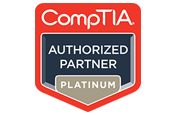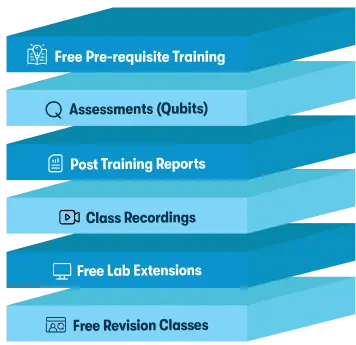We're open through the holidays to support your upskilling goals — Which training do you want to book?
We're open through the holidays to support your upskilling goals — Which training do you want to book?
Unable to find what you're searching for?
We're here to help you find itCompTIA Security+ SY0-701 Course Overview
The CompTIA Security+ SY0-701 course is a comprehensive training program designed to equip learners with the knowledge and skills necessary to secure applications, networks, and devices. It provides an understanding of Fundamental security concepts, ensuring that participants are well-versed in the prevention and mitigation of various Threat types. Through engaging lessons, learners will explore Cryptographic solutions, Identity and access management, and strategies for securing both enterprise and Cloud network architecture.
The course emphasizes the importance of resilience, site security, and Vulnerability management, while also covering essential topics such as network and Endpoint security capabilities. Participants will enhance their understanding of Application security, incident response, and monitoring, and learn to analyze indicators of Malicious activity.
Moreover, the curriculum delves into Security governance, risk management processes, and Data Protection and compliance concepts, ensuring that learners are prepared to tackle the complexities of cybersecurity in today's dynamic environments. By the end of the course, individuals will be ready to take the Security+ certification exam, opening doors to a multitude of cybersecurity career opportunities.
Successfully delivered 81 sessions for over 194 professionals
Purchase This Course
USD
View Fees Breakdown
| Course Fee | 2,950 |
| Exam Fee | 250 |
|
Total Fees (without exam) |
2,950 (USD) |
USD
View Fees Breakdown
| Course Fee | 2,250 |
| Exam Fee | 250 |
|
Total Fees (without exam) |
2,250 (USD) |
USD
View Fees Breakdown
| Flexi Video | 16,449 |
| Official E-coursebook | |
| Exam Voucher (optional) | |
| Hands-On-Labs2 | 4,159 |
| + GST 18% | 4,259 |
|
Total Fees (without exam & Labs) |
22,359 (INR) |
|
Total Fees (with Labs) |
28,359 (INR) |
Select Time
Select Date
| Day | Time |
|---|---|
|
to
|
to |
♱ Excluding VAT/GST
You can request classroom training in any city on any date by Requesting More Information
Inclusions in Koenig's Learning Stack may vary as per policies of OEMs
Scroll to view more course dates
You can request classroom training in any city on any date by Requesting More Information
♱ Excluding VAT/GST
*Inclusions in Koenig's Learning Stack may vary as per policies of OEMs
Suggestion submitted successfully.
Koenig Learning Stack
Inclusions in Koenig's Learning Stack may vary as per policies of OEMs



